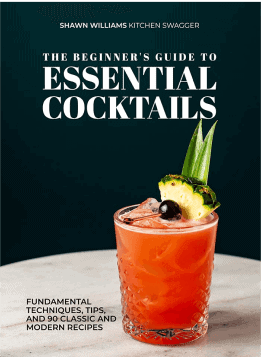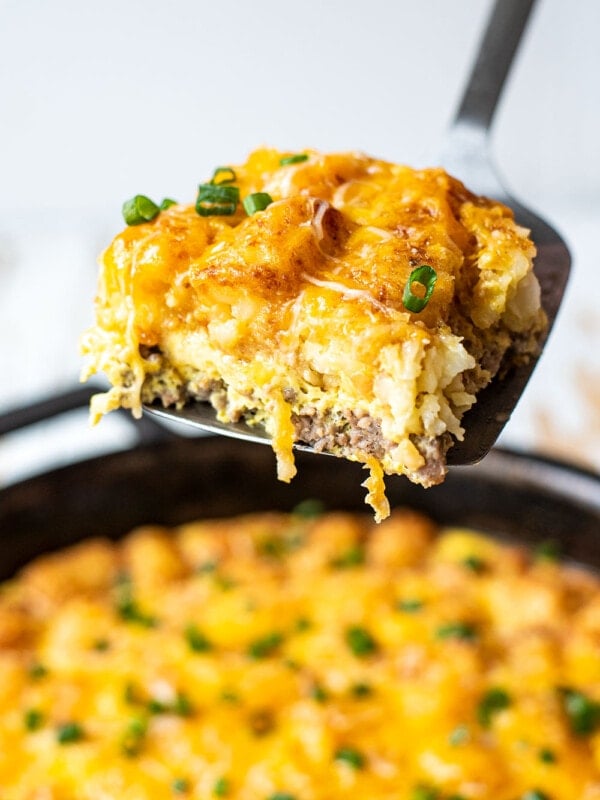This post may contain affiliate links. Please read our disclosure policy.
Baking bacon in the oven is the ultimate hack for perfect hands-free bacon. It saves time and stovetop space and perfectly crisps the bacon without spattering oil all over the counter. The best part? Baked bacon won’t shrivel up like traditional fried bacon!

If there’s anything I can’t stand about skillet bacon it’s the curly shriveled pieces with both crispy and rubbery edges. Baking bacon solves this problem because the bacon rests much flatter as it cooks so it doesn’t shrivel up and cook unevenly.
Looking for more delicious brunch recipes? Try my almond Dutch baby, sweet potato breakfast hash, tater tot breakfast casserole, and Bloody Mary recipe!
Table of Contents
Why This Recipe Works
- Easier for a crowd: you can easily cook a full package of bacon all at once without the need to shuffle it around in a skillet or cook it in several batches on the stovetop.
- Foolproof: baking bacon cooks the bacon slowly and uniformly. This gives you a longer window to cook bacon to your desired level of crispiness.
How to Bake Bacon in the Oven
Step 1.
Preheat oven to 400°F. Line a large, rimmed baking sheet with parchment paper. It works best to fully cover the sheet for easier cleanup. Lay bacon out flat as tightly as possible with minimal to no overlap for best results.


Step 2.
Bake bacon for 15-20 minutes (20-25 for thick cut), or until the desired level of crispness is reached. No need to flip.

Step 3.
Remove bacon and let drain on a paper towel-lined plate for 5 minutes before serving. Note, bacon will continue to cook/brown as it cools.

Different Baking Techniques
There are a few different methods when it comes to baking bacon in the oven:
- Directly on the baking sheet: for crispier bacon, some swear by placing the bacon directly on a baking sheet to better fry/crisp the bacon on a hot cooking surface. Baking bacon directly on a baking sheet will cook the bacon faster but also narrows your window for perfect bacon. Not to mention the cleanup can be a bit of a headache. Line your sheet with foil for easier cleanup.
- Wire rack method: place the bacon on a wire rack stacked on a baking sheet. The wire rack keeps the bacon elevated off the pan for more even 360-degree cooking. This method takes a little longer since the bacon will not be in contact with the sizzling bacon fat. I recommend lining the baking sheet with foil to collect the drippings.
- Baking sheet lined with parchment paper: lining a baking sheet with parchment paper is my preferred method because it’s the best of both worlds. The paper will absorb some of the excess fat rendered from the bacon while still taking advantage of the hot pan and grease. This makes for easier cleanup and reduces the risk of burning the bacon.
Expert Tips
- I usually opt for thick-cut bacon over regular bacon because personally, I think regular bacon is too thin.
- Lining your baking sheet with parchment paper will absorb some of the extra grease and decrease your chances of scorching the bacon and the pan. Aluminum foil will behave similarly to placing the bacon directly on the baking sheet.
- Bacon benefits from resting and will continue to brown and crisp even after it’s taken out of the oven.
- You can cook two trays of bacon in the oven if you rotate the pans halfway through cooking. You may need to add more time cooking time as well.
Frequently Asked Questions
Baking time will vary depending on the volume and thickness of the bacon. At 400°F, regular bacon usually takes 15-18 minutes while thick-cut bacon will take 20-25 minutes.
Always bake bacon uncovered. This helps the bacon cook faster and get crispier.
On a baking sheet lined with parchment paper.
More Brunch Recipes
Enjoy this recipe? If you made this recipe, please leave a ★ ★ ★ ★ ★ star rating in the recipe card below & a review in the comments!
How to Bake Bacon

Ingredients
- 1 pound thick or regular-cut bacon
Instructions
- Preheat oven to 400°F.
- Line a large, rimmed baking sheet with parchment paper.
- Lay bacon out flat as tightly as possible with minimal to no overlap for best results.
- Bake bacon for 15-20 minutes (20-25 for thick cut), or until the desired level of crispness is reached. No need to flip.
- Remove bacon and let drain on a paper towel-lined plate for 5 minutes before serving. Note, bacon will continue to cook/brown as it cools.
Notes
Nutrition
Nutrition information is automatically calculated, so should only be used as an approximation.


















I came upon this method on my own. I use 425 degrees, though, for ~20 minutes. Perfect EVERY time! You can get that crispy, melt-in-your-mouth texture that pan frying and microwaving lack. The strips are flat. I cook a pound at a time and store it in a gallon zip bag to reheat later.
One question, though: What are those crunchy, salty, bacony drip spots called? They’re my favorite part and you can’t get them by other methods. I’ve nicknamed them “bacon nummies!” Do they have a more technical name?